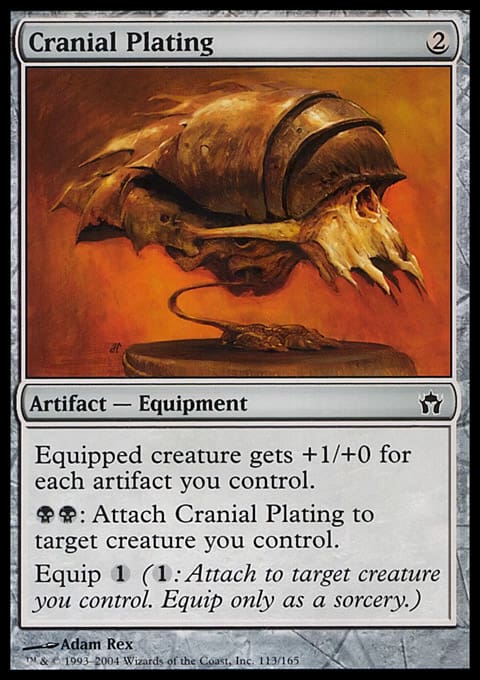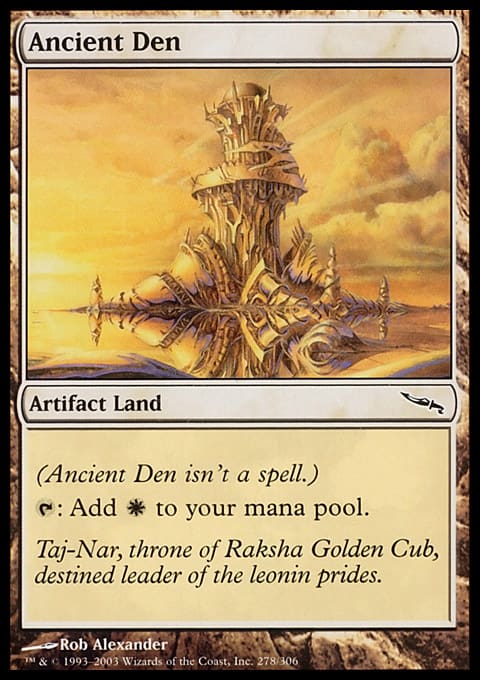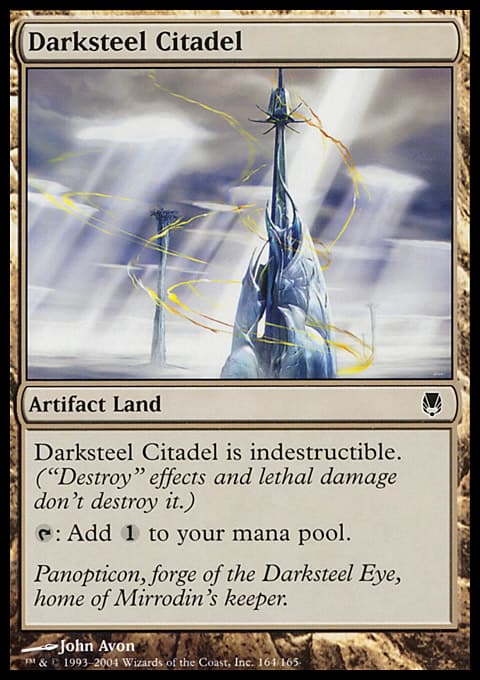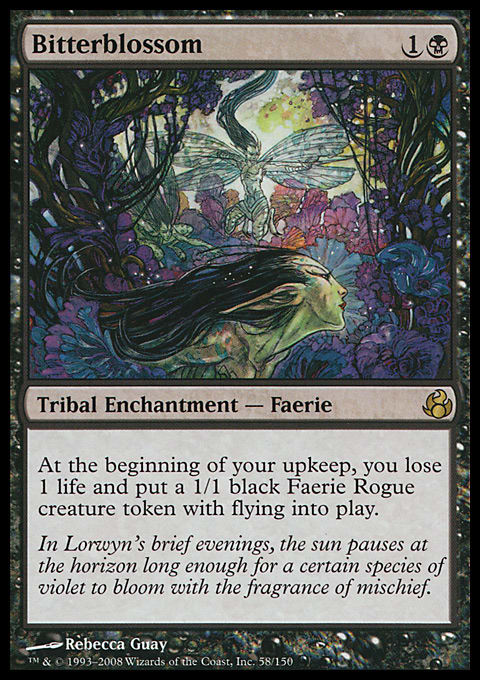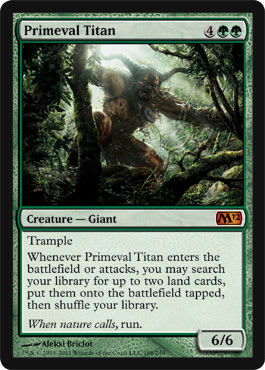So, I’m going to talk about Cavern of Souls this week by . . . not talking about Cavern of Souls. This has been a major point of discussion recently. For some background material on the debate, see Zac Hill, Matt Sperling, Patrick Sullivan, and Sam Black (Premium). What I’m going to do is talk about formats in general and format design. I hope that by the end of the article, you’ll realize why I don’t like Cavern of Souls. If you want the TL;DR version, just skip down to the conclusion, but I’m guessing most of you won’t understand my logic if you just read that.
Introduction
So, where to begin with format design? I believe the most crucial question to answer is this: What do you want from a format? What constitutes a “good” format? So, let’s answer that question.
This is the Magical Christmas Land scenario, as they say. In other words, this is what happens in a perfect world. Now, the world is not perfect, which means this rarely happens in real life, but it is still useful to have as a goal and a useful starting point to understand what any given format architect is attempting to achieve. Format architecture is a real thing (Cube proves this), and any given format architect (either you, for a format such as Cube or a custom set, or WotC for “real” formats) has the ability to control and shape his or her format as he or she sees fit.
So, how do we deal with format architecture for Constructed formats like Standard? What is important in format architecture? How do we look at a card pool and extrapolate the core elements of a format? I’ll talk about all this and more in this article.
Format Basics – The Core of Achieving Balance
What is at the core of Magic formats? What makes formats balanced or unbalanced? Understanding this is the first and most important step to understanding format architecture.
Formats are about counter-pressures. In other words, formats rely on counterbalancing influences to remain balanced. There are two types of counter-pressure: tactical and strategic. Tactical counter-pressure deals with the specific card at hand. Strategic counter-pressure deals with the strategic space a card, deck, or strategy occupies. We’ll take a look at both in more detail, but I first want to explore the basic principle of balancing via counter-pressure.
The basic principle of balance by counter-pressure is one that you see all over the place. The basic principle lies in the idea that you can balance a force out with an equal and opposite force. Consider this from a physics standpoint: You can cancel out any given force—say, gravity—with an equal and opposite force—say, lift. This is exactly how airplanes fly. They generate enough lift to not only balance out the force of gravity but actually overcome it.
You can do something similar with a balloon, for example. If you inflate it, then tie a rock to the end of it, you can get the rock to float in mid-air. Why? The balloon is lighter than air and thus generates lift, but gravity acts on the rock to pull the balloon down. When the two forces are equal, the balloon and the rock appear to be suspended in mid-air when what’s actually going on is that you have two equal and opposite forces that are balancing each other out.
This doesn’t just apply to physical forces, however. Consider the basic premise of the US Government: balance of power achieved via checks and balances. In theory, the overlapping areas of influence of the various branches of government allow each branch to exert a restraining force on each other branch of government. Each branch of government has the capability of countering, if you will, what another branch of government chooses to do. In theory, this prevents any individual branch of government from growing too powerful. Some might argue as to the current practical effectiveness of this system in the here and now, but that is not germane here. We’re looking at theoretical principles for the moment. Application comes later.
Counter-Pressure in Magic
So, how do counter-pressures work in Magic?
In Magic, you rarely have exactly equal and opposite forces, but you do often have directional pressure, which exists pretty much everywhere. When you combine various directional pressures, you can achieve something very similar to direct counter-pressure. Here are some examples:
- Creature removal exerts pressure on creatures to achieve a useful impact on the game in a limited time frame.
- Creatures exert pressure on card-draw spells by limiting the time the opponent has to deploy and make use of the cards he has drawn.
- Land destruction exerts pressure on expensive spells by delaying their casting, thus potentially completely removing their impacts on the game.
These are just some examples of the way that different types of spells and effects can exert influence (pressure) on other types of spells and effects. This is essentially how Magic cards interact, and thus, it forms the core of every Magic format.
But Magic has oppositional pressure as well. I talked about strategic and tactical counter-pressure earlier. Let me explain what that means. Tactical counter-pressure is a way of dealing with specific cards—and not just in the Disenchant-blows-up-enchantments kind of way. Let’s take a look at an example from Avacyn Restored:
- Pillar of Flame is strong against Strangleroot Geist – The core of this interaction is the fact that Strangleroot Geist decks rely on Strangleroot Geist for resiliency against removal and sweepers. In general, Strangleroot Geist requires a much more significant investment in resources (cards, life) than most 2-drops to deal with due to undying. Pillar of Flame provides counter-pressure against this because Pillar of Flame is able to deal with Strangleroot Geist all in one go. Just Pillar the Geist, and it is gone.
This is an example of a tactical counter-pressure. A specific card is strong against a specific card. This sort of thing can have larger implications for entire formats, but it is a critical element of how formats shape up. Consider that decks before had to rely on a combination of cards to deal with things such as Strangleroot Geist and Thrun, the Last Troll before Avacyn Restored. However, once that set releases, Terminus and Pillar of Flame will be legal and will exert their own pressures on the format. Pillar of Flame will exert a strong pressure on Strangleroot Geist, and Terminus, overall, will exert a strong pressure on the various hexproof and undying creatures as it will sweep them all away.
So, what is a strategic counter-pressure? A strategic counter-pressure is a pressure exerted by a strategy upon another strategy. Let’s take a look at a fundamental example:
- I’m playing a deck centered around sacrificing a lot of creatures for benefit; thus, I’m very strong against Dredge – Here, I didn’t set out to be good against Dredge; however, my natural strategy of sacrificing a lot of dudes for fun and profit gives me good game against Dredge because it’s very easy for me to remove an opposing Bridge from Below. Without that card, Dredge really doesn’t do much.
This sort of strategic counter-pressure exists because every strategy has strengths and weaknesses. As you run various strategies up against each other, you will run into strategies that are naturally designed to exploit your weakness or naturally play into your strengths. This is where you see strategic counter-pressure in action, as in the above example.
Let’s put this into a broader context. A good way of thinking about Magic formats is like a building. A building has a variety of supports to keep it standing. Not all of these supports are absolutely necessary at all times, but removing any of them weakens the structural integrity of the building. Do this enough, and the building will collapse. In much the same way, Magic relies on directional pressures to support the health of any given format. This is where different archetypes come from. Each archetype exerts a certain strategic and tactical pressure on the format. In a balanced format, these pressures are balanced out by pressures exerted by other decks or archetypes. However, when enough of these pressures fail to act, the format degenerates, and something actually broken appears.
Strategic Space and Counter-Pressure
So, let’s take a look at each strategic space individually and examine what sorts of pressures they can exert and what sorts of pressures they are vulnerable to.
Aggro
- As a strategy, aggro is capable of exerting pressure via speed against any opposing archetype. Aggro’s ability to quickly and proactively execute its game plan forces the opponent to interact with it quickly. This constrains what the opposing deck is capable of doing. If the opposing deck is not capable of interacting with the aggro deck, it will lose.
- The aggro strategy is vulnerable to having the game extended by cheap, efficient answers. Due to the redundancy and linearity of aggro, the aggro player has a very limited set of options to disrupt what the opponent is trying to do. Aggro also tends not to generate card advantage. This means that as the game goes on, opposing strategies that are capable of generating card advantage will take over the game.
Aggro-Control
- As a strategy, aggro-control forces the opponent to fight through disruption to react to any given threat. Aggro-control’s core is the disruptive suite that it forces you to overcome in order to reach the position from which you can deal with the threat or threats it has presented. In other words, aggro-control forces you to overcome disruption in order to make it into a position to deal with its threats. This is the strength of the archetype.
- Aggro-control is vulnerable to a couple of things, centering on the strategy’s sacrifice of defensive capabilities:
- Aggro-control is vulnerable to a faster clock because the deck’s strategy relies on being able to get ahead of the opponent. If it is not able to do so, aggro-control tends to have a lot of trouble.
- Aggro-control is also vulnerable to two-way cards that are capable of both attacking and defending at the same time. (In other words, the two-way cards both deal with aggro-control’s threats and answers at the same time.) This is because aggro-control sacrifices defensive capabilities. Thus, when answers are able to generate threats, not only does the aggro-control deck have to deal with the answer, but it also has to deal with the threat. This places the aggro-control deck in an untenable position because it forces the aggro-control player to take time to do so, giving up the time advantage the strategy works so hard to generate and exploit.
Midrange Aggro
- Like aggro, midrange aggro is focused on threat generation. However, unlike aggro, it is focused on sustained threat generation. Midrange aggro will attempt to threaten your position as long as possible. In doing so, it hopes to wear down your defenses. The strength of this pressure lies in this ability to play through opposing defenses and overcome insufficient resistance.
- Midrange aggro is then vulnerable to the exact opposite. It is vulnerable to a strong, consistent, and resilient defensive position. Because midrange aggro is strategically a proactive approach, it will eventually exhaust itself against this sort of defensive position, allowing the opponent to take whatever route he chooses to win the game.
Hybrid Control
- Hybrid control’s fundamental strength and pressure is the fact that it operates sort of like a launch countdown. Hybrid control’s strategy centers on achieving a game-ending combination of cards or a game-ending state. This looming end forces the opponent to interact and achieve his victory beforehand. Hybrid control’s extremely strong endgame forces opponents to do something earlier. This is the archetype’s fundamental strategic pressure.
- Hybrid control is vulnerable to one of two pressures:
- Preventing hybrid control from deploying its endgame
- Winning the game before hybrid control is able to reach its endgame
Midrange Control
- Midrange control applies pressure through having an extremely consistent, strong, and resilient offense and defense. It is capable of defending itself well and while generating a strong offense. The overall card quality of midrange control decks tends to be very high, and many of them function both offensively and defensively. Thus, midrange control is able to shift its stance based on what is necessary at the time. It can choose to be more aggressive or more controlling as the game situation demands. This flexibility is the archetype’s primary strategic strength.
- Midrange control is vulnerable to a strategy of exhaustion. Because the archetype does not generate pressure quickly, a deck that is designed to amass resources and then deploy them can exploit this lack of speed by both drawing and playing all the cards. This is bad for midrange control because the opposing deck can use the resources it’s amassed to overpower midrange control’s threats either via quantity or quality.
Control
- The control strategy exerts pressure through card quality and resource advantage. Control is dedicated to using a defensive position to generate large resource advantages. It then leverages those advantages into a winning position through high-quality, resilient threats.
- As a strategy, control is vulnerable to decks able to disrupt its defensive attempts. Control fundamentally relies on having the right spell at the right time, and if the opponent is able to resist the deployment of the selected defense, control tends to have problems. Control can compensate for you resisting the effectiveness of already deployed defenses by selecting different defenses. However, if you are resisting the control deck’s ability to deploy said defenses, the archetype has difficulty compensating for this.
Ideally, in a balanced format, each strategic space is capable of executing its strategic pressure effectively. However, in a balanced format, each strategic vulnerability can also be successfully exploited.
What Happens When Formats Break?
Formats break when enough of the supporting pressures of the format push in a single direction. Essentially, formats break when a single archetype’s pressure cannot be balanced by pressure from opposing decks. This tends to happen when combinations of cards appear and the synergies between them are too powerful for opposing strategies to counter.
For example, there is nothing wrong with the following card:
By itself, it is actually a very interesting card with a very interesting effect. However, when combined with other cards, it may become a problem. For example, when Arcbound Ravager met the following cards, there might have been a small issue in Standard:
Now we have the beginnings of a strong, synergistic archetype that is going to put some pressure—and maybe a significant amount of pressure—on the format. Then, you added these cards, and a huge problem arises:
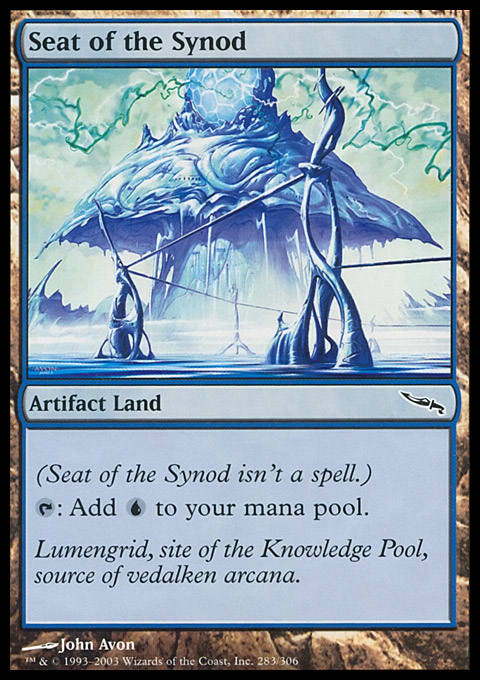 |
||
 |
So, what happened back in Mirrodin block? The combination of artifact lands, Ravager, Disciple, Plating, and the affinity for artifacts mechanic created an overpowering synergy that the format was unable to overcome. The basic principle of having counter-pressure to push back against various archetypes fails because the archetype in question, Affinity, can simply overcome any attempted counter-pressure. Affinity proves that it is possible to break a format to the extent that counter-pressure in any way is inconceivable.
So, this is what happens when formats break. But what happens with format-dominant decks? Why do certain archetypes have an extended reign atop formats but aren’t actually truly busted? Well, let’s take a look at an example.
There is nothing inherently wrong with this card:
Wizards printed this card and created strong synergies with it.
 |
There is nothing inherently wrong with printing highly synergistic cards and creating strong internal synergies. In fact, this sort of thing is exactly what makes Magic fun. So, why did Faeries dominate Standard for as long as it did?
Faeries dominated Standard because Wizards did not allow for sufficient counter-pressure against the deck. Older formats (particularly Extended) have proven that it is possible to have strong counter-pressure against Faeries. Decks such as Zoo were able to exert enough pressure to keep Faeries in check, even when the deck had Umezawa's Jitte and a bunch of other good tools. Thus, strategically, Faeries is not overpowered; it just happened that while it was in Standard, there was not a strategy able to exert sufficient counter-pressure.
The Issue at Hand
So now, it’s time to look at the issue at hand. Zac Hill claims that the issue with the current format is Mana Leak (or maybe Mana Leak with Snapcaster Mage). I contend that this is not actually true. Mana Leak is part of the problem; it is not the actual problem. What is a problem is the offensive function of Mana Leak next to Delver of Secrets, Geist of Saint Traft, and Snapcaster Mage. The entire statement and condition is important. Once again, it’s not about individual cards, but about interactions between cards—just as Arcbound Ravager by itself is not the problem, but Arcbound Ravager and friends is.
Defining the Current Format
Before we go into what is wrong with the current format (before Avacyn Restored), we need to understand the current format first. Let’s take a look at the various individual decks, strategies, and cards and what kind of pressure they exert on the format. We’ll start with the elephant in the room: W/U Delver.
Delver – Strategically, Delver operates like a very typical aggro-control deck. It deploys a threat (Delver of Secrets or Geist of Saint Traft), then resists your attempts to deal with that threat. Delver doesn’t do anything particularly ground-breaking strategically or tactically; it is just extremely efficient within that strategic space. The individual cards it is running are all very good at fulfilling their roles, and thus, the deck is very powerful.
Strangleroot Geist (primarily R/G aggro) – The aggressive Strangleroot Geist decks put pressure on the format like aggro does. They provide an external clock to force the opponent to interact with them in a reasonable time frame. The resiliency of Strangleroot Geist as a threat allows the deck to apply sustained pressure for slightly longer than most aggro decks are able to do, much like midrange aggro.
Wolf Run Ramp – Wolf Run Ramp exerts a hybrid-control-like influence on the metagame. Due to the power of Primeval Titan and Inferno Titan and the difficulty associated with beating those cards, often, a resolved Titan leads to victory. This isn’t always the case, but there are many situations in which letting an Inferno Titan or Primeval Titan hit the board simply means game over. Thus, in that sense, Wolf Run Ramp has a hybrid-control-like influence on the metagame.
One of the strengths of Wolf Run, however, is its ability to operate in the midrange control space. Using cards such as Slagstorm, Huntmaster of the Fells, and Acidic Slime, Wolf Run Ramp is able to supplement the fact that its Titans (mainly Inferno Titan) also generate card advantage. Thus, it can win much like a midrange control deck, using Titans as two-way threats and methods of generating value.
Control (primarily Esper and U/B) – Control is exerting its standard pressure on this metagame, but it is, by far, the smallest of the major archetypes right now. Why is this the case? Because the pressure control is exerting has limited effectiveness. Control’s best tools—cards such as Day of Judgment—have their efficacy severely mitigated either by the opponent’s strategy (in the case of W/U Delver) or their opponent’s card selection (Strangleroot Geist). Thus, control lacks the tools to exert a strong pressure on the metagame right now.
Looking at Mana Leak
Mana Leak is a problem in only one of these archetypes: Delver. So, let’s ask the logical question: Why is Mana Leak a problem in Delver?
Mana Leak is a problem in Delver because it protects efficient, fast, hard-to-answer threats. Specifically, Mana Leak is a problem because it protects Geist of Saint Traft and Delver of Secrets. This problem is compounded by the fact that Delver receives additional Mana Leaks in the form of Snapcaster Mage.
The effectiveness of Mana Leak is normally mitigated by the fact that you can simply have 3 extra mana when you play your spell, thus making Mana Leak dead. However, because Delver forces the opponent to interact quickly (by being aggro-control), opponents do not have the luxury of time and cannot wait to make three extra land drops. This makes Mana Leak extremely powerful for Delver because Delver can choose which defensive spells to counter with almost complete impunity.
In a control deck, Mana Leak is not a problem because the method of mitigating Mana Leak’s effectiveness—extra land drops—is always available. Control gives the opponent the luxury of time and thus gives the opponent the ability to make those extra land drops to play around Mana Leak. However, within control, Mana Leak does serve a necessary function. Let’s examine Mana Leak’s function in control:
- Mana Leak serves as an efficient early-game answer to a variety of spells.
- Mana Leak carries this function over by serving as an effective deterrent to stronger late-game spells.
Both of these functions are absolutely crucial to the proper functioning of a control deck. Control fundamentally relies on having the right spell at the right time. However, due to the variant nature of draws, it cannot guarantee that this situation will arise. Thus, control requires a small number of flexible spells that can deal with a wide range of threats early in the game. This is the function that Mana Leak serves. However, due to the limited quantity of defensive spells a control deck can play, it requires those spells to maintain their effectiveness over many turns. The fact that Mana Leak is a quick, efficient answer that maintains effectiveness for a reasonable amount of time makes it by far the best role-player for control in this format.
So, Mana Leak serves a necessary function in this metagame, but that doesn’t mean it can’t be replaced, right? We can have other spells that replicate this strategic function, and thus we can remove Mana Leak.
In theory, this is true. However, in our current format, I think Mana Leak can’t be removed. Why not?
Mana Leak serves a necessary function in this format because Primeval Titan wins the game through its triggered ability. Simply fetching an Inkmoth Nexus and a Kessig Wolf Run is frequently enough to end the game. Thus, what you have to stop is not the 6/6 part of Primeval Titan or the trigger on attacking, but Primeval Titan’s trigger upon entering the battlefield.
Why do you have to stop this trigger? Because if you let the trigger resolve, you have to deal with the Titan, the Inkmoth Nexus, and, in addition to those, every other creature and Inkmoth Nexus the Wolf Run deck presents. This is because Kessig Wolf Run combined with the amount of mana Wolf Run Ramp can generate turns any creature into a large threat. Thus, you must stop Primeval Titan before it hits the table.
There is only one way to stop a creature from hitting the table: Counter it.
But there are other ways of pressuring Primeval Titan, right? Theoretically, this is true, but in practicality, none of those pressures right now are effective. Let’s take a look at the two other most potentially effective pressures:
- You can attempt to “go under” Primeval Titan (i.e. kill the Wolf Run player before he gets there) – This strategy doesn’t work very well because Wolf Run right now is very well suited to defending against an aggressive assault. It has two strong sweepers against aggressive decks in Slagstorm and Whipflare. It has a solid midrange creature that gains life and generates advantage (Huntmaster of the Fells), and finally, out of Avacyn Restored, it gets a card that deals with its primary problem, Strangleroot Geist (Pillar of Flame, which also, incidentally, deals with Delver of Secrets).
- You can attempt to build your deck to take advantage of Primeval Titan so you can steal it or copy it – In Zendikar-era Standard, you could Threaten Primeval Titan and find a pair of Teetering Peaks, which was nice. So, in a sense, that pressure existed a year ago. But what about now? How are you taking advantage of Primeval Titan outside of Inkmoth Nexus and Wolf Run? If you can do that, why aren’t you just running Primeval Titan (making you part of the problem and not part of the solution)?
Essentially, because of Pillar of Flame, I see Primeval Titan as having no legitimate pressure outside of countermagic, which stops it from hitting the table. Cavern of Souls stops this from happening because it stops Primeval Titan from being countered.
Conclusion
Formats rely on the principle of counter-pressure to balance themselves. Individual decks, archetypes, and cards exert pressure on the format. In balanced formats, this pressure is countered by the pressure exerted by other cards, decks, and archetypes. As long as this system of counterbalancing pressures remains intact, the format remains balanced and fun.
What I am afraid of is the fact that Cavern of Souls removes what I view as the singular effective means of checking Primeval Titan both as a card and a strategy. This fear may not materialize, but even if it doesn’t, it still sets a bad precedent. Wizards is failing to consider the entire context and has developed tunnel vision. They identified what they perceived as a problem (Mana Leak), and chose a direct, flavorful means of dealing with it (Cavern of Souls). However, they did not take into account the potential collateral damage that this method of problem-solving.
Remember: What is important is not the individual cards, but the context (or format) they exist in.
I hope I’m proven wrong about Cavern of Souls. I really, honestly do. I do not want this format to devolve into Delver versus Ramp, but I have the feeling that it will.
Chingsung Chang
Conelead most everywhere and on MTGO
Khan32k5 at gmail dot com















